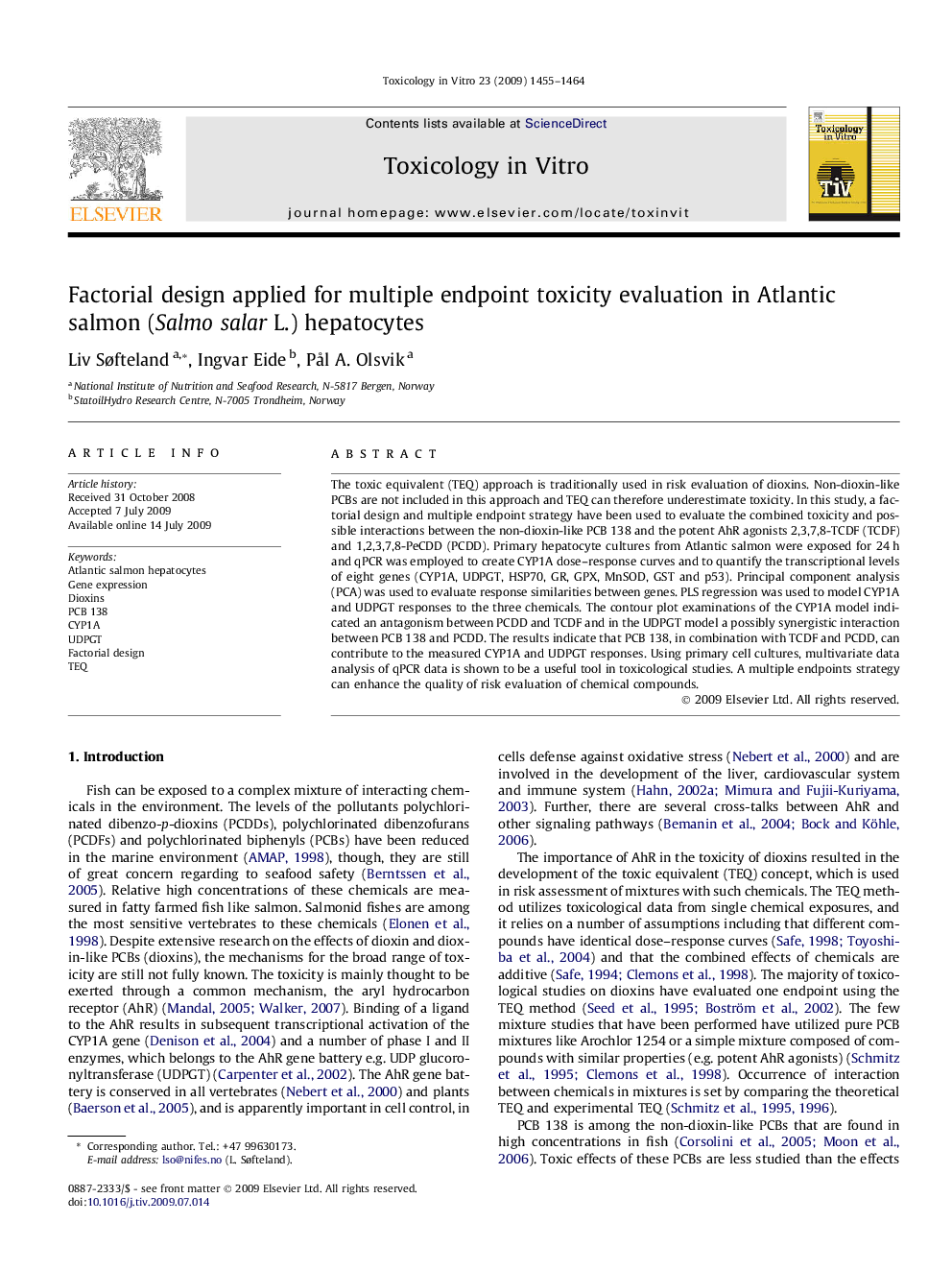| کد مقاله | کد نشریه | سال انتشار | مقاله انگلیسی | نسخه تمام متن |
|---|---|---|---|---|
| 2602633 | 1133791 | 2009 | 10 صفحه PDF | دانلود رایگان |

The toxic equivalent (TEQ) approach is traditionally used in risk evaluation of dioxins. Non-dioxin-like PCBs are not included in this approach and TEQ can therefore underestimate toxicity. In this study, a factorial design and multiple endpoint strategy have been used to evaluate the combined toxicity and possible interactions between the non-dioxin-like PCB 138 and the potent AhR agonists 2,3,7,8-TCDF (TCDF) and 1,2,3,7,8-PeCDD (PCDD). Primary hepatocyte cultures from Atlantic salmon were exposed for 24 h and qPCR was employed to create CYP1A dose–response curves and to quantify the transcriptional levels of eight genes (CYP1A, UDPGT, HSP70, GR, GPX, MnSOD, GST and p53). Principal component analysis (PCA) was used to evaluate response similarities between genes. PLS regression was used to model CYP1A and UDPGT responses to the three chemicals. The contour plot examinations of the CYP1A model indicated an antagonism between PCDD and TCDF and in the UDPGT model a possibly synergistic interaction between PCB 138 and PCDD. The results indicate that PCB 138, in combination with TCDF and PCDD, can contribute to the measured CYP1A and UDPGT responses. Using primary cell cultures, multivariate data analysis of qPCR data is shown to be a useful tool in toxicological studies. A multiple endpoints strategy can enhance the quality of risk evaluation of chemical compounds.
Journal: Toxicology in Vitro - Volume 23, Issue 8, December 2009, Pages 1455–1464